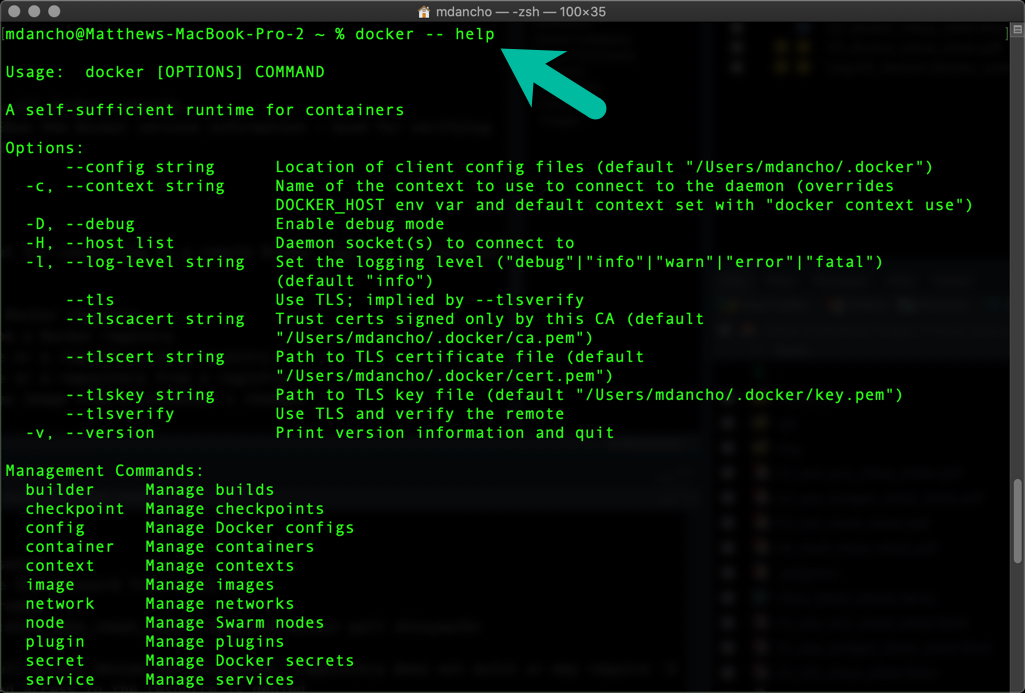
- #Docker run image command network how to#
- #Docker run image command network password#
- #Docker run image command network free#
To complete the following task you will need the IP address of your Docker host. Now that the container is running and mapped to a port on a host interface you can test connectivity to the NGINX web server. This port mapping is what effectively makes the containers web service accessible from external sources (via the Docker hosts IP address on port 8080). Take note of the command the container is running as well as the port mapping - 0.0.0.0:8080->80/tcp maps port 8080 on all host interfaces to port 80 inside the web1 container. The top line shows the new web1 container running NGINX.

docker infoĬONTAINER ID IMAGE COMMAND CREATED STATUS PORTS NAMESĤe0da45b0f16 nginx "nginx -g 'daemon.

Run the docker info command and locate the list of network plugins. The docker info command shows a lot of interesting information about a Docker installation. Do not confuse this with the “bridge” driver. In the example above we are showing the configuration details for the network called “bridge”. NOTE: The syntax of the docker network inspect command is docker network inspect, where can be either network name or network ID.
#Docker run image command network how to#
See Developing ASP.NET Core Applications with Docker over HTTPS for information and samples on how to develop ASP.NET Core applications with HTTPS in Docker containers."Id": "3430ad6f20bf1486df2e5f64ddc93cc4ff95d81f59b6baea8a510ad500df2e57", Developing ASP.NET Core Applications with Docker over HTTPS When using PowerShell, replace %USERPROFILE% with $env:USERPROFILE.
#Docker run image command network password#
The password must match the password used for the certificate. Run the container image with ASP.NET Core configured for HTTPS: docker pull /dotnet/core/samples:aspnetappĭocker run -rm -it -p 8000:80 -p 8001:443 -e ASPNETCORE_URLS=" -e ASPNETCORE_HTTPS_PORT=8001 -e ASPNETCORE_Kestrel_Certificates_Default_Password="password" -e ASPNETCORE_Kestrel_Certificates_Default_Path=\https\aspnetapp.pfx -v %USERPROFILE%\.aspnet\https:C:\https\ /dotnet/core/samples:aspnetapp Generate certificate and configure local machine: dotnet dev-certs https -ep %USERPROFILE%\.aspnet\https\aspnetapp.pfx -p with a password. Use the following instructions for your operating system configuration. Running pre-built container images with HTTPS


The certificate generated by dotnet dev-certs is for use with localhost only and should not be used in an environment like Kubernetes. The instructions are similar to using production certificates. This document uses self-signed development certificates for hosting pre-built images over localhost.
#Docker run image command network free#
Let's Encrypt is a certificate authority that offers free certificates. CertificatesĪ certificate from a certificate authority is required for production hosting for a domain. NET Core 2.2 SDK or later is required for some of the instructions in this document. This sample requires Docker 17.06 or later of the Docker client. For instructions on how to run Docker in development with Visual Studio, see Developing ASP.NET Core Applications with Docker over HTTPS. This document explains how to run pre-built container images with HTTPS using the. HTTPS relies on certificates for trust, identity, and encryption.


 0 kommentar(er)
0 kommentar(er)
